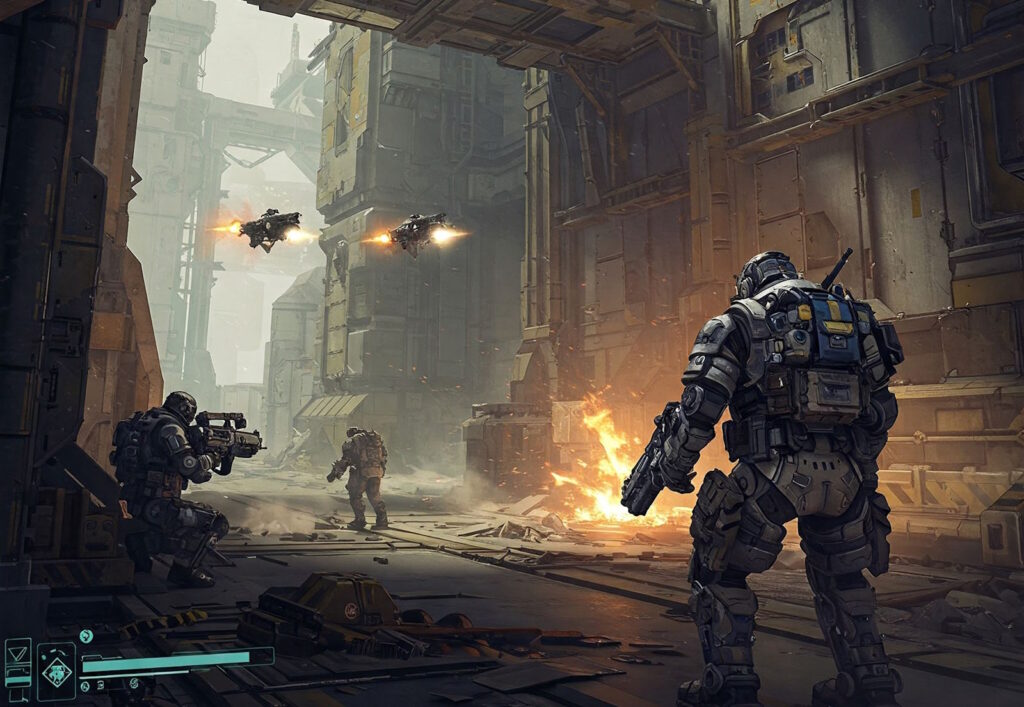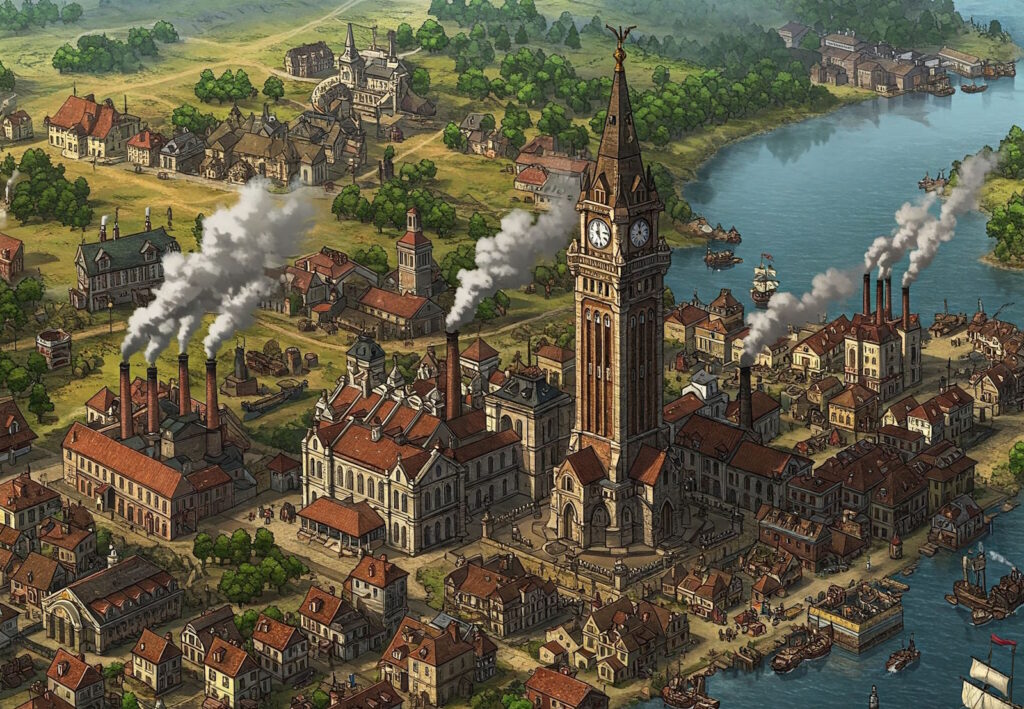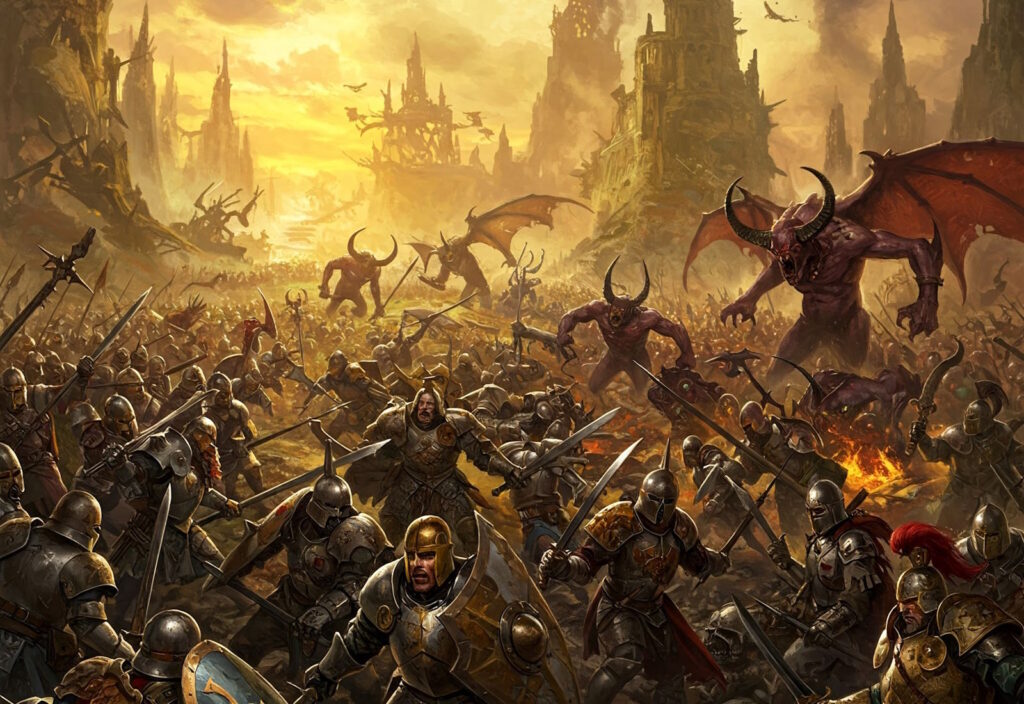Introduction to Titanfall 2
Titanfall 2, developed by Respawn Entertainment and released in October 2016, stands as a remarkable entry in the shooter genre, often overshadowed by competitors in the market. Following the success of the original Titanfall, this sequel expanded upon its predecessor’s foundations, introducing a more comprehensive single-player campaign alongside its acclaimed multiplayer mode. Set in a futuristic universe characterized by war between the Interstellar Manufacturing Corporation (IMC) and the Militia, Titanfall 2 immerses players in fast-paced, adrenaline-pumping battles with unique mechanics that redefine traditional first-person shooter gameplay.
One of the significant features of Titanfall 2 is its innovative movement system, which combines parkour elements with pilot mechanics, allowing players to traverse the environment fluidly. This includes wall-running, double-jumping, and sliding, enabling a level of mobility rarely seen in other shooters. Moreover, the title enriches the combat experience by offering a diverse array of Titans—large mech suits that players can control. Each Titan boasts distinct abilities and characteristics, providing players with strategic options during engagements, further enhancing the game’s tactical depth.
At its core, Titanfall 2 explores major themes of camaraderie and sacrifice through the relationship between the protagonist, Jack Cooper, and his Titan, BT-7274. This emotional narrative is supported by well-crafted environments and engaging level design, immersing players into a world filled with conflict and moral dilemmas. By blending lore-driven storytelling with exhilarating gameplay mechanics, Titanfall 2 aims to connect with both new players and dedicated fans of the shooter genre, inviting them to experience an adventurous narrative while enjoying the rapid exchanges of combat that define the series.
Gameplay Mechanics and Features
Titanfall 2 has established itself as a landmark in the first-person shooter genre, primarily due to its innovative gameplay mechanics and features. One of the most distinguished aspects is its pilot movement system, which allows players to traverse the environments with fluidity and finesse. Pilots can run along walls, execute double jumps, and perform swift maneuvers that create a unique sense of speed and agility. This verticality is not commonly found in traditional shooters, making Titanfall 2 stand out from the crowd.
Wall-running, in particular, is a key feature that exemplifies this freedom of movement. It encourages players to think creatively about their approach to combat, enhancing tactical gameplay rather than merely relying on conventional cover-based mechanics. The sharp design of the maps complements this system; they are intricately crafted to support the acrobatic style of play, allowing for spontaneous encounters and dynamic engagements that keep the experience fresh and exciting.
Another integral element of Titanfall 2 is the use of Titans, massive combat mechs that players can pilot. The introduction of these armored giants adds a layer of strategy and complexity to gameplay. Titans can be summoned to the battlefield after players achieve certain objectives, seamlessly integrating into ongoing skirmishes. This mechanic allows for diverse combat scenarios, as players must decide the optimal timing and location to deploy their Titans for maximum effectiveness. Each Titan class possesses unique abilities and loadouts, further encouraging players to adapt their strategies based on team composition and the ever-shifting battlefield dynamics.
Supported by both single-player and multiplayer modes, these gameplay features ensure that Titanfall 2 provides a rich and engaging experience. The combination of pilot movement, wall-running, and Titan mechanics creates a lively backdrop for players, making every match an enjoyable and competitive encounter. Ultimately, these innovative aspects of enjoyability and strategy set Titanfall 2 apart as a shooter that truly deserved more attention in the gaming community.
Single-Player Campaign: A Hidden Gem
The single-player campaign of Titanfall 2 stands out as a remarkable aspect of the game, distinguishing itself from the prevalent trend among many contemporary shooters that prioritize multiplayer experiences. This campaign offers players an engaging storyline, rich character development, and innovative level design that collectively create a compelling narrative. Players assume the role of Jack Cooper, a rifleman who unexpectedly inherits a Titan named BT-7274, forging an emotional bond that enhances gameplay throughout the journey.
The narrative of Titanfall 2 intricately weaves themes of friendship, loyalty, and sacrifice, as Jack and BT navigate through a war-torn landscape. The dialogue between the pilot and his Titan not only serves to humanize the robotic character but also fosters a unique connection that is often absent in other first-person shooters. This connection is a central element of the gameplay experience, allowing for strategic gameplay choices that impact the overall story arc.
Level design in Titanfall 2 is another highlight of the campaign, with each environment meticulously crafted to offer a seamless blend of verticality and horizontal exploration. Players encounter a variety of challenges, from intense shootouts to cleverly designed puzzles that require cooperation with BT. This approach to level design enhances the gameplay dynamics, encouraging players to experiment with different strategies and abilities, adding depth and replay value to the campaign.
In the competitive landscape of gaming, where multiplayer modes often overshadow single-player campaigns, Titanfall 2’s story-driven experience emerges as a hidden gem. It captures the essence of what makes a shooter truly memorable: a narrative that resonates, characters that connect, and gameplay that is both innovative and thoughtful. Thus, even in a market driven by online play, Titanfall 2 provides a standout experience that should not be overlooked.
Multiplayer Experience: An Evolving Battlefield
Titanfall 2 offers a rich and diverse multiplayer experience that stands out in the crowded landscape of first-person shooters (FPS). The game features various modes, including the classic Team Deathmatch, Capture the Flag, and the highly strategic Domination. Each mode provides players with unique tactical challenges and opportunities for engagement, which cater to different play styles. The fluid movement mechanics, including wall-running and double jumping, create an exhilarating sense of freedom, setting it apart from the more grounded gameplay of other titles.
The map design in Titanfall 2 further contributes to its exceptional multiplayer experience. Maps are intricately designed, incorporating verticality and expansive areas that encourage players to utilize the game’s dynamic movement system. Every map is adorned with multiple pathways, ensuring that players can approach objectives from various angles. This design philosophy facilitates creativity and strategic planning among players, offering them the freedom to devise their own tactics. The environments range from industrial complexes to scenic landscapes, each map reflecting the game’s immersive universe.
One significant aspect of Titanfall 2’s multiplayer is its balance. The game developers have meticulously crafted the arsenal of weapons and Titans to ensure that each option has its strengths and weaknesses, allowing for varied gameplay experiences. This balance was continuously refined post-launch through numerous updates, which addressed player feedback and introduced new content, making the competitive scene vibrant. The community played a pivotal role in this evolution. The player base actively engaged in discussions that led to patches and enhancements, furthering the game’s longevity. As a result, Titanfall 2’s multiplayer is not only challenging and rewarding but also a community-driven experience that deserves more recognition.
Visuals and Sound Design
Titanfall 2 is widely recognized for its stunning visuals and exceptional sound design, which significantly enhance both gameplay immersion and player experience. The graphics of the game deliver a vivid and detailed representation of its futuristic world, characterized by a diverse range of environments. From sprawling urban landscapes to rugged wilderness settings, each location is meticulously crafted with attention to detail. The art style incorporates a blend of realism and sci-fi elements, making every scene visually captivating. The use of dynamic lighting and advanced particle effects further adds depth and realism to the visuals, creating a more engaging atmosphere for players as they navigate through the game.
Moreover, the character and titan designs are equally noteworthy. Each titan offers a unique aesthetic, contributing to the game’s identity and providing players with an immersive feel of piloting massive machines. The animations of both the pilots and titans are smooth and fluid, enhancing the overall visual experience. This visual fidelity not only serves aesthetic purposes but also aids in gameplay, as players can easily recognize different titans and their capabilities based on visual cues.
In terms of sound design, Titanfall 2 excels as well. The audio contributes significantly to the overall atmosphere of the game, with an impressive range of sound effects that bring the battlefield to life. Weapons produce distinct sounds that vary in impact, allowing players to gauge the effectiveness of their arsenal. Environmental sounds, such as the hum of machinery and distant explosions, deepen the sense of immersion and engagement. The game’s soundtrack provides a complementary backdrop that heightens emotional moments, making pivotal encounters more impactful.
Ultimately, the combination of exceptional visuals and compelling sound design plays a critical role in enhancing the Titanfall 2 experience. These elements not only contribute to the game’s aesthetic appeal but also elevate the gameplay, making it a significant title in the first-person shooter genre.
Comparative Analysis with Other FPS Titles
Titanfall 2 was released in 2016, a time when the first-person shooter (FPS) genre was dominated by giants such as Call of Duty and Battlefield. Both franchises had established loyal fan bases and were renowned for their intense multiplayer experiences and cinematic single-player campaigns. However, Titanfall 2 set itself apart in several notable ways, showcasing its unique concepts while also facing challenges that contributed to its overshadowing in a saturated market.
One of the primary distinctions of Titanfall 2 lies in its implementation of parkour mechanics and the seamless integration of Titans—giant mech suits that players can pilot. This feature creates dynamic gameplay that encourages mobility and strategy, differing from the more grounded combat presented in titles like Call of Duty and Battlefield. Where Call of Duty often eliminates verticality and fast-paced movement in favor of tight maps, Titanfall 2’s mechanics incentivize players to traverse environments creatively. Additionally, the single-player campaign of Titanfall 2 received widespread acclaim for its engaging narrative and innovative level design, in contrast to the typical FPS campaigns of its contemporaries, which often settle for formulaic approaches.
On the other hand, Titanfall 2’s multiplayer mode faced stiff competition. Call of Duty and Battlefield benefit from years of familiarity with their respective mechanics and established communities, resulting in a barrier that Titanfall 2 had difficulty overcoming. Despite its impressive mechanics and inventive gameplay, Titanfall 2’s marketing efforts were insufficient against the powerful promotional machines of its competitors, which furthered its struggle to achieve notable sales figures.
Ultimately, while Titanfall 2 carved out a unique niche within the FPS genre, its innovative approach and compelling gameplay features were not enough to eclipse the popularity of established franchises like Call of Duty and Battlefield. This competitive landscape, compounded by marketing challenges, contributed significantly to its underappreciation upon release.
Community and Legacy
The community surrounding Titanfall 2 has played a significant role in maintaining the game’s relevance and enthusiasm, even years after its release. Initially overshadowed by the competition, Titanfall 2 cultivated a dedicated player base passionate about both the gameplay mechanics and the intricate world it presents. This community engagement is evident across various platforms, particularly through forums, Discord servers, and social media channels where players frequently discuss strategies, share gameplay experiences, and host tournaments.
Fan-driven content has also contributed substantially to Titanfall 2’s legacy. Players have created numerous custom mods, artwork, and even fan fiction, reflecting their love for the game’s universe. YouTube channels and Twitch streams have become popular platforms for showcasing gameplay footage, tutorials, and thematic challenges, allowing enthusiastic gamers to express their creativity and foster a sense of belonging within the Titanfall 2 community. This user-generated content not only enriches the gaming experience but also draws in new players, effectively widening the game’s audience and encouraging a resurgence of interest.
Furthermore, Titanfall 2 has influenced the shooter genre, pushing the boundaries of traditional gameplay elements. Elements such as wall-running, pilot vs. Titan mechanics, and a rich narrative experience have inspired other game developers to explore similar dynamics. The legacy of Titanfall 2 is reflected in its continual presence within gaming discussions, where it is often referenced as a benchmark for future shooters. Despite its struggles in sales, the passionate community has ensured that Titanfall 2 remains a beloved title, ingrained in the fabric of modern gaming culture.
The Impact of Marketing and Release Timing
Titanfall 2, developed by Respawn Entertainment, is regarded as a masterpiece in the first-person shooter genre. However, despite its critical acclaim, the game struggled to achieve commercial success due in part to marketing decisions and the timing of its release. When analyzing the impact of these factors, it becomes apparent that they significantly influenced the visibility and sales of this exceptional title.
One of the primary challenges Titanfall 2 faced was its release date. The game launched on October 28, 2016, just a week after the highly anticipated Call of Duty: Infinite Warfare and shortly before the massive launch of Battlefield 1. This timing placed Titanfall 2 in direct competition with two giants of the industry, leading to a lack of visibility amid the prevailing buzz surrounding these titles. Gamers’ attention was diverted to the established franchises, rendering Titanfall 2 an underdog in its own market segment.
In terms of marketing, Respawn Entertainment opted for a strategy that focused on highlighting the game’s unique mechanics and gameplay features. However, the promotional efforts were overshadowed by the aggressive advertising campaigns of its competitors. Many potential players were unaware of Titanfall 2’s innovative single-player campaign and its refined multiplayer experience, which included features distinguishing it from other shooters. The marketing, while effective in highlighting gameplay elements, did not manage to capitalize on building an enthusiastic community as seen with other blockbuster titles.
Moreover, the branding of Titanfall 2 was somewhat diluted by its predecessor, Titanfall, which had debuted as an Xbox exclusive. Transitioning to a multi-platform release did broaden its accessibility but may also have confused the marketing narrative. The inherent challenges of timing, market competition, and promotion strategies played a pivotal role in limiting Titanfall 2’s commercial potential, ultimately overshadowing the quality of the game itself.
Conclusion: A Call to Action for Gamers
In the expansive realm of multiplayer shooters, the competition is fierce, with many titles vying for the attention of gamers worldwide. However, Titanfall 2 often finds itself overshadowed by more prominent names in the genre, despite its remarkable offerings. Throughout this exploration of the game, we have highlighted its innovative gameplay mechanics, stunning visuals, and engaging storyline, all of which contribute significantly to an immersive gaming experience.
The blend of parkour mobility, coupled with the thrilling use of Titans, creates a unique dynamic that sets Titanfall 2 apart from other shooters. Furthermore, the well-crafted single-player campaign presents a narrative depth that adds emotional weight to the game, a feature often lacking in the genre. For those who appreciate a seamless merger of gameplay and story, it is undeniable that Titanfall 2 stands out, making it worthy of more recognition.
This call to action is aimed at gamers who might be new to the title or have yet to experience its intricate mechanics. For individuals who enjoy fast-paced, skill-based gameplay interlaced with storytelling, Titanfall 2 presents an opportunity that should not be missed. Engaging with this underrated masterpiece signifies a broader appreciation for the diversity found within the shooter genre. It is imperative that players give Titanfall 2 a chance, as doing so not only benefits individual gaming experiences but also supports the recognition of creativity and quality within the industry.
In conclusion, Titanfall 2 deserves more attention and a rightful place among the greats in gaming history. By exploring its mechanics and engaging with the narrative, gamers can enrich their understanding of what makes a shooter truly exceptional. So, whether you’re a seasoned player or a newcomer, take the time to delve into Titanfall 2 and discover why it stands as a testament to innovation within video games.



